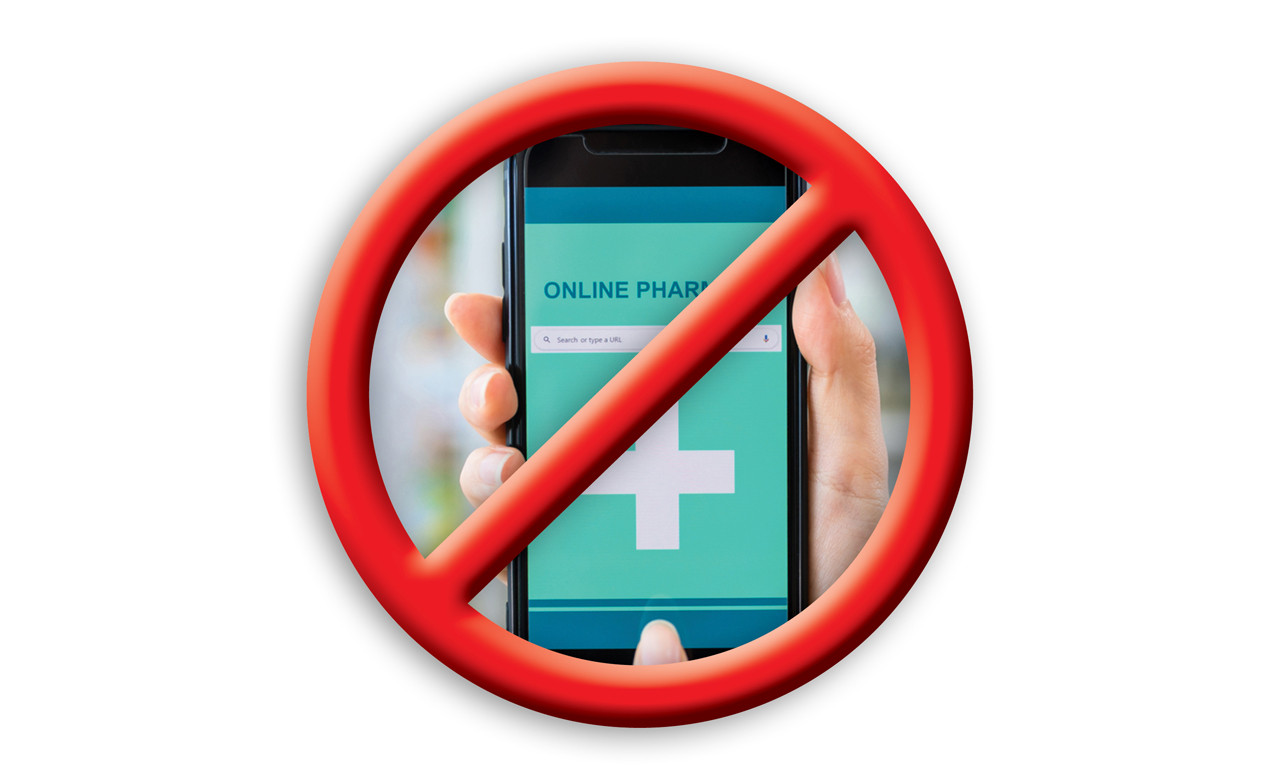Sonya Collins

When patients look to the Internet for medications, their search could yield up to 45,000 online drug sellers. According to the National Association of Boards of Pharmacy (NABP), very few are legitimate; some 95% of so-called online pharmacies operate illegally. As patients are becoming increasingly comfortable with seeking medications online—a partial byproduct of the pandemic—it’s crucial that they understand the risks involved.
Fewer than 15% of pharmacists discuss the risks of online pharmacies with their patients. In fact, more than half of pharmacists say they are not confident in their knowledge of illegal online pharmacies and the associated risks. However, pharmacists can play a critical role in protecting patients from this growing public health risk.
“One action step for pharmacists is to become knowledgeable about the scope of this issue,” said John Hertig, PharmD, associate professor and department chair of pharmacy practice at Butler University College of Pharmacy and Health Sciences in Indianapolis. “The more knowledgeable our pharmacists are, the more willing they will be to engage in conversations about this with patients and family members at the point of care.” Hertig has published research on illegal online pharmacies and is currently developing an educational module on the topic for pharmacists.
Here’s what pharmacists need to know.
The problem
The ranks of online pharmacies that engage in some degree of illegal activity are growing daily. For the past 3 years, NABP has added an average of 200 online drug sellers to its Not Recommended List every week.
These online sellers’ illicit activities include a variety of offenses whose impact on patients ranges from potentially benign to extremely hazardous. Online sellers may:
Be unlicensed in both the state where they are operating and the state where they are sending prescriptions.
Sell medications without a prescription.
Sell substandard, falsified, or unapproved medications.
Risks to patients include over- or under-dosing, drug interactions, adverse events, and even death.
Nearly 90% of illegal online drug sellers dispense medications to patients without requiring a prescription. More than half of them sell controlled substances, according to NABP.
Substandard and falsified products are a particular patient safety concern as they may contain poisonous fillers. Some counterfeit drugs have been found to contain brick dust, heavy metals, rat poison, boric acid, and antifreeze.
WHO has long tracked the prevalence and consequences of substandard and falsified medical products in developing countries. The organization’s most recent data show that 1 in 10 products in low- and middle-income countries fit this description.
Illegal online drug sellers are increasingly sending products to the United States.
“This is a patient safety problem here in the United States,” Hertig said. “It’s no longer just a developing or lower- and middle-income country issue.”
Patients are susceptible
Hertig’s research has found that patients choose online drug sellers for three key reasons: cost, convenience, and access. They may find better prices online. They can order and receive the drugs without leaving home.
“Access can be geographic access, where you actually can’t get to a pharmacy,” Hertig said, “or it could be lack of access because of stigma.” Among those potentially stigmatizing drugs that patients might prefer to access online, Hertig cited PrEP and oral contraceptives.
But patients are overwhelmingly unaware of the potential risks. Some 7 in 10 Americans believe that drug sellers who appear high in Internet search results are trustworthy, according to Alliance for Safe Online Pharmacies Global Foundation’s 2021 survey on American perceptions and use of online pharmacies. Four in 10 believe that any website offering medications has FDA or state approval to do so. ■
Pharmacists can help protect patients
Pharmacists can consider asking patients where they get their other medications. If patients are buying online, they should ask why. If the online source is potentially unsafe, pharmacists should offer alternative means for patients to get the medication.
Alert patients to common red flags that indicate a drug seller is not playing by the rules, including:
- Not requiring a prescription
- Advertising specific medications, such as sexual health drugs, on the site
- Discounts and buy-one-get-one (BOGO) deals
- Fraudulent use of seals or corporation logos
- Typos, misspellings, and other errors
Pharmacists can also point patients to websites that verify the legitimacy of online pharmacies, such as Safe.Pharmacy: https://safe.pharmacy/not-recommended-sites/ ■